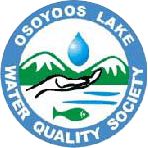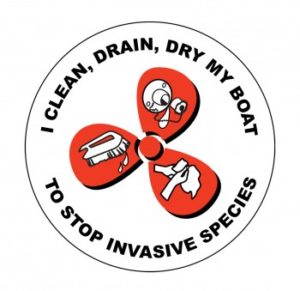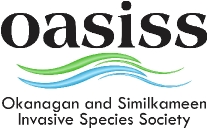Canada Geese – the Scoop on Goose Poop
What’s the problem?
Have you tried to go for a walk along the beach, only to find yourself dodging piles of goose droppings?
The Canada Goose population has exploded from just 70 in 1990 to several thousand around Osoyoos from recent winter bird counts.
Did you know that one goose produces about 1 kg of waste per day. Many geese like to congregate on beaches, playing fields, public parks, golf courses and private lawns where their deposits are either leached into the ground or washed back into the water.
Studies worldwide have shown the droppings are high in organisms potentially harmful to humans, such as E. coli, Salmonella, Giardia, and the parasite that causes ‘Swimmers’ Itch’. They are also high in nitrates known to contribute to low oxygen levels in the water which in turn may be harmful to fish.
How did it get to be this bad?
Canada Geese are a perfect example of how wildlife learns to coexist with humans. Before human population grew in the Okanagan, they nested in the summer tundra of northern Canada and overwintered either in coastal saltmarshes or migrated into the southern USA. The first changes to this pattern occurred after the forests were logged, then came farms and ranches, then neatly-mown lawns with a regular supply of tender grass the geese prefer to eat.
In the early 20th century, decades of unrestricted hunting had brought them to the brink of extinction, so thousands of captive-bred geese were released by wildlife managers throughout Canada. These captive-bred birds lacked the strong migratory instincts of their wild cousins and learned to exploit human-created habitats. Another factor has been the mild Okanagan winters over recent years.
A growing goose population near urban areas has become a major health issue all over North America, and changes to the federal law that protects these birds are currently being considered to allow control of non-migrating geese. In parts of the U.S., beaches and lakeside parks have had to be closed because of the potential contamination hazard.
In Osoyoos, the geese enjoy well-manicured lawns, quiet beaches, no predators, and easy access to their food supply. Some well-meaning residents contribute to the problem by feeding the geese, encouraging them further to remain in town all year round instead of migrating. We have unintentionally provided first-class bed and board for the Canada Goose!
What’s being done?
It’s an ongoing problem throughout North America, and different towns use different approaches with varying levels of success. Unfortunately, there is no single easy way. Some that have been tried in the Okanagan include:
- Addling the eggs, by either shaking or oiling them – the only successful method of control. However, it is difficult to find the nests here because they are scattered over a wide area and the geese do not nest in easily accessible areas (e.g. Oxbows and wetlands).
- Scare tactics: using drones, balloons, kites, bangers, dogs to chase the geese etc. This is expensive and time-consuming because it has to be done on a continual basis. Also, it results in the geese simply flying to another part of the town or valley and does not actually decrease their numbers.
- Relocating: capturing geese and moving them to other parts of the country: this has not yet been tried in the Okanagan although it has been done in other parts of North America, with mixed results. It may have temporary value only since the birds often simply return, and the costs are high.
- Signage in parks (do not feed the geese etc): most towns in the Okanagan now have signs in all their parks.
- Erecting fences: fairly effective but not practical in public parks.
- Constructing rock barriers– in Osoyoos, ‘Inukshuks’ (statutes made from piles of rock) were constructed along the community beach for a six-month trial period years ago. They were found to be effective initially, but after several weeks, the birds became used to it and eventually returned to the beach.
- Culling: most communities feel this is the only practical answer to date; however, the reaction from some residents has been negative and officials feel this should be a last-resort measure. Limited culling has been carried out in Oliver and Osoyoos over recent years.
- It is illegal to discharge a firearm within town limits (which is where most of the geese congregate) and a permit is required. As geese mate for life, culling leaves solitary birds, as well as those who may escape with bird-shot injuries. Culled geese cannot be donated to food banks because of health and food safety laws.
Okanagan Regional Goose Management Committee
This group was formed in 1995 to share information from different parts of the valley, and identify solutions to the goose problem. Since then, in larger cities such as Kelowna, water quality levels during the peak of the summer season were approaching threshold levels for beach closures, and the increasing numbers of geese prompted local governments to get involved and to work together and with ORGMC. A 60-page report has been produced detailing a valley-wide strategy and action plan to be used by all communities, plus the pooling of funding and resources. The action plan includes:
Educate the public and increase awareness
- Obtain support and involvement from Interior Health, golf courses, school boards, Regional Health, BC Parks, First Nations, plus local councils and residents.
- Examine and possibly change local bylaws.
- Release information via website, media, meetings etc.
Reduced goose land use in conflict areas
- Continue the coordinated application of deterrence and scare techniques to remove geese from sensitive public areas.
- Promote the modification of existing parks and public areas so that they do not provide the security features that geese require.
- Relocate geese away from sensitive areas by moving them to approved areas.
- As a last resort, implement lethal control techniques where non-lethal techniques are insufficient.
Population control
- Continue existing and local egg addling programs by expanding them to cover all Canada goose breeding locations in the Okanagan Valley.
Monitoring
- Continue to monitor goose numbers at key public use areas where Canada geese concentrate, by way of brood counts and annual surveys.
- Monitor water at beaches to determine what level of impact geese have on water quality.
What can I do?
Please don’t feed the geese! If waterfowl become attracted to food handouts, they won’t leave. It’s that simple.
IF YOU FIND A GOOSE NEST BETWEEN MARCH AND MAY
CALL TOLL-FREE 1-877-943-3209
(Okanagan Valley Goose Management Program)
The geese prefer wide, open spaces and short grass. Leave a barrier strip of tall grass (6” or higher) adjacent to the shoreline. If possible, replace with Pachysandra, English Ivy, Vetch, wildflowers or other ground cover.
Some Osoyoos residents have erected a small fence 10-12 inches high along their shoreline property.
If you don’t want a fence, try stringing a wire or length of twine between small posts. The geese seem to avoid crossing the string and move on.
Don’t try to addle (shake) the eggs yourself – it’s illegal.
Remove nesting materials prior to nesting. Also, harrass the birds using dogs or noisemakers.
More info:
Okanagan Regional Goose Management Committee: Goose Management Plan






